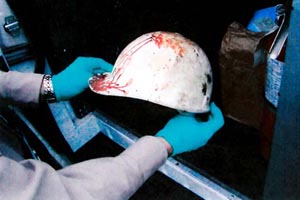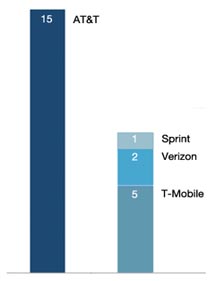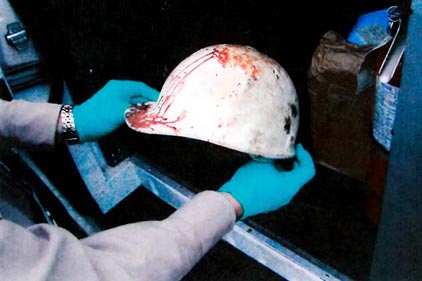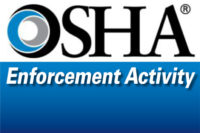
|
Posted with permission from ProPublica. This story was co-published with PBS Frontline.
When federal lawmakers passed landmark legislation creating the Occupational Safety and Health Administration, they intended to protect workers by imposing clear, uniform rules on their employers.
The 1970 law [2] assumed that the relationship between companies and the people they hired for dangerous jobs would be straightforward, employer to employee.
No one planned for industries like tower climbing.
Tower climbers, the roughly 10,000 workers who build and maintain the nation’s TV, radio and cell towers, aren’t hired directly by the corporations that rely on their labor. They’re subcontractors, sometimes separated by a daisy chain of other contractors from the companies that ultimately pay for tower projects.
Experts say this tiny field is emblematic of a fundamental change in the way U.S. companies deal with risky work – and in OSHA’s ability to hold companies accountable when workers are injured or die.
Over the past decade, considerable attention has focused on the out-sourcing of U.S. jobs to foreign countries with lower safety standards and wages. Much less noticed has been the trend of companies out-sourcing their dirtiest, most perilous work within the U.S.
Since 2003, tower climbing has ranked among the most dangerous jobs in America, compiling an average annual death rate more than 10 times [3] that of construction work. Almost 100 climbers have been killed on the job, 50 of them on cell sites.
From their perch atop the contracting chain, carriers typically set many of the crucial parameters for work on cell sites, including deadlines, pay rates and even technical specifications, down to the exact degree an antenna should be angled. An analysis of cell tower deaths [4] by ProPublica and PBS “Frontline” showed that tight timetables and financial pressure often led workers to take fatal shortcuts or to work under unsafe conditions.
“We’ve had a number of situations where we think that accidents were caused by companies trying to meet deadlines and … cutting corners on safety in order to meet those deadlines,” said Jordan Barab, OSHA’s deputy administrator.
But Barab said it’s difficult for the agency to hold cell companies responsible for safety violations involving subcontractors. In most cases, federal officials have interpreted OSHA regulations to mean that carriers can be held accountable only if they exercised direct control over subcontractors’ work or were aware of specific unsafe conditions.
OSHA has not sanctioned cell carriers for safety violations implicated in any subcontractor deaths on cell sites since 2003, a review of agency records by ProPublica and PBS “Frontline” found.
Failing to track tower deaths
OSHA has made little effort to systematically connect the deaths of tower workers to specific carriers and had not known until ProPublica and PBS “Frontline” told them that there have been 15 fatalities on AT&T jobs since 2003 – more than at the other three major carriers combined over the same period.

|
| Source: OSHA investigations, ProPublica research |
The agency attempted to fine a carrier just once and failed, losing a nearly three-year legal battle with a regional cell company in Kentucky. The agency has never taken on the four major carriers – Verizon, T-Mobile, AT&T and Sprint – even though there have been almost two dozen fatalities on jobs done for their networks.
Most of OSHA’s enforcement efforts have focused on a transient cast of small subcontractors, though they, too, typically have eluded significant penalties. Over the last nine years, the median fine levied for safety violations linked to a fatal tower accident was $3,750, an analysis by ProPublica and PBS “Frontline” showed.
OSHA has made little effort to connect the deaths of tower workers to specific carriers. Barab acknowledged that OSHA officials had not known until ProPublica and PBS “Frontline” told them that there have been 15 fatalities on AT&T jobs since 2003 – more than at the other three major carriers combined over the same period.
If that many of a company’s own employees suffered workplace fatalities, Barab said, it would be “exactly the kind of case” the agency would consider for its Severe Violator Enforcement Program [5], which OSHA reserves for employers who show an indifference to safety. But because tower climbers are subcontractors, the agency examines each death separately, and does not connect them to the carriers whose cell networks they build.
“Generally, we can only cite employers when their employees are at the work site,” Barab said. “As you go up the line, it becomes much more difficult to actually hold the companies at the top responsible.”
Officials at the four major cell carriers declined requests to be interviewed for this story. In a written statement [6], AT&T said its contracts require the companies it hires for tower work to adhere to OSHA safety regulations. Statements from Verizon, T-Mobile and Sprint called subcontractors’ safety a priority.
“We have always maintained a strong safety policy and record for our employees, which we also expect from our contractors,” the T-Mobile statement said.
Some labor experts counter that OSHA’s limited enforcement authority gives companies like cell carriers a powerful incentive to avoid any role in worker safety. If those at the top bear no consequences, they said, unsafe practices by subcontractors will continue.
“Until there’s an incentive for the carriers to actually improve this they’re probably not going to,” said Catherine Ruckelshaus, legal co-director at the National Employment Law Project, a liberal group that advocates for worker rights. If regulators held carriers accountable for accidents involving contract workers, “they’re going to try to insure that the subcontractors that they engage are legitimate, above-board subcontractors with sophistication and good health and safety training.”
But Ed Reynolds, an industry consultant who was AT&T’s president of network services until 2007, said punishing carriers for tower-climbing accidents would not reduce fatalities.
“You can take the captain of the ship approach,” he said. “You can say that Randall Stephenson is responsible because Randall Stephenson’s the CEO of AT&T. But what impact … would [that] have on the eventual safety of future crews? I think that’s too far to connect.”
Click here to read the rest of the story.



